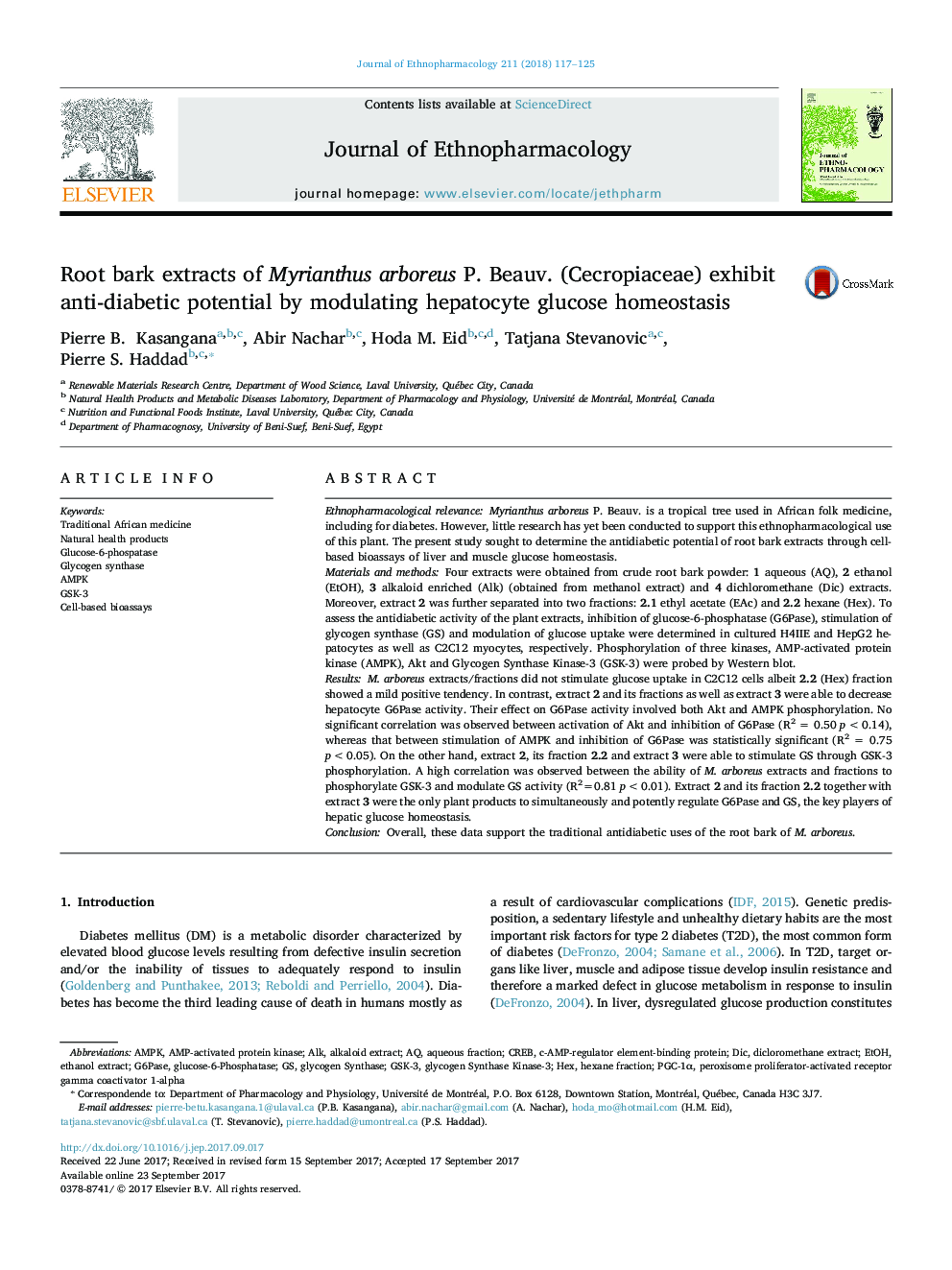| کد مقاله | کد نشریه | سال انتشار | مقاله انگلیسی | نسخه تمام متن |
|---|---|---|---|---|
| 5555895 | 1560351 | 2018 | 9 صفحه PDF | دانلود رایگان |

Ethnopharmacological relevanceMyrianthus arboreus P. Beauv. is a tropical tree used in African folk medicine, including for diabetes. However, little research has yet been conducted to support this ethnopharmacological use of this plant. The present study sought to determine the antidiabetic potential of root bark extracts through cell-based bioassays of liver and muscle glucose homeostasis.Materials and methodsFour extracts were obtained from crude root bark powder: 1 aqueous (AQ), 2 ethanol (EtOH), 3 alkaloid enriched (Alk) (obtained from methanol extract) and 4 dichloromethane (Dic) extracts. Moreover, extract 2 was further separated into two fractions: 2.1 ethyl acetate (EAc) and 2.2 hexane (Hex). To assess the antidiabetic activity of the plant extracts, inhibition of glucose-6-phosphatase (G6Pase), stimulation of glycogen synthase (GS) and modulation of glucose uptake were determined in cultured H4IIE and HepG2 hepatocytes as well as C2C12 myocytes, respectively. Phosphorylation of three kinases, AMP-activated protein kinase (AMPK), Akt and Glycogen Synthase Kinase-3 (GSK-3) were probed by Western blot.ResultsM. arboreus extracts/fractions did not stimulate glucose uptake in C2C12 cells albeit 2.2 (Hex) fraction showed a mild positive tendency. In contrast, extract 2 and its fractions as well as extract 3 were able to decrease hepatocyte G6Pase activity. Their effect on G6Pase activity involved both Akt and AMPK phosphorylation. No significant correlation was observed between activation of Akt and inhibition of G6Pase (R2 = 0.50 p < 0.14), whereas that between stimulation of AMPK and inhibition of G6Pase was statistically significant (R2 = 0.75 p < 0.05). On the other hand, extract 2, its fraction 2.2 and extract 3 were able to stimulate GS through GSK-3 phosphorylation. A high correlation was observed between the ability of M. arboreus extracts and fractions to phosphorylate GSK-3 and modulate GS activity (R2=0.81 p < 0.01). Extract 2 and its fraction 2.2 together with extract 3 were the only plant products to simultaneously and potently regulate G6Pase and GS, the key players of hepatic glucose homeostasis.ConclusionOverall, these data support the traditional antidiabetic uses of the root bark of M. arboreus.
144
Journal: Journal of Ethnopharmacology - Volume 211, 30 January 2018, Pages 117-125